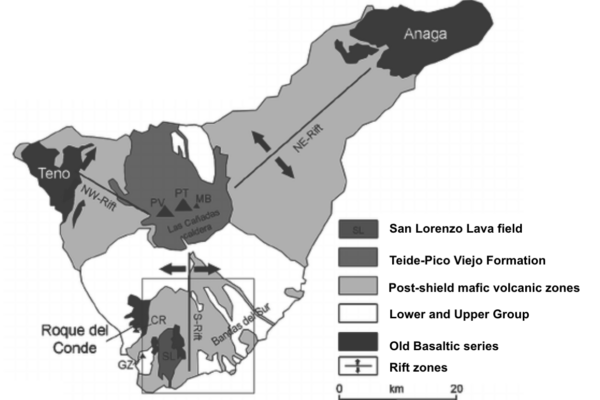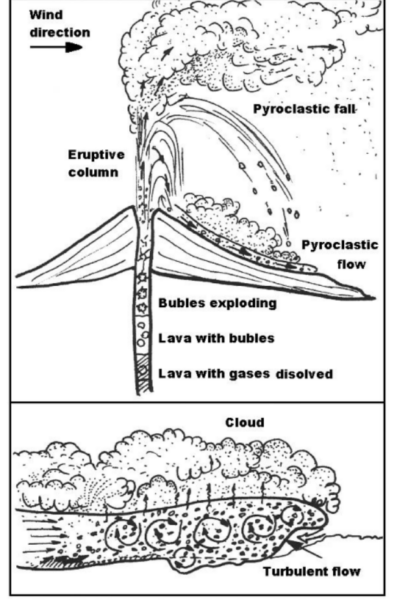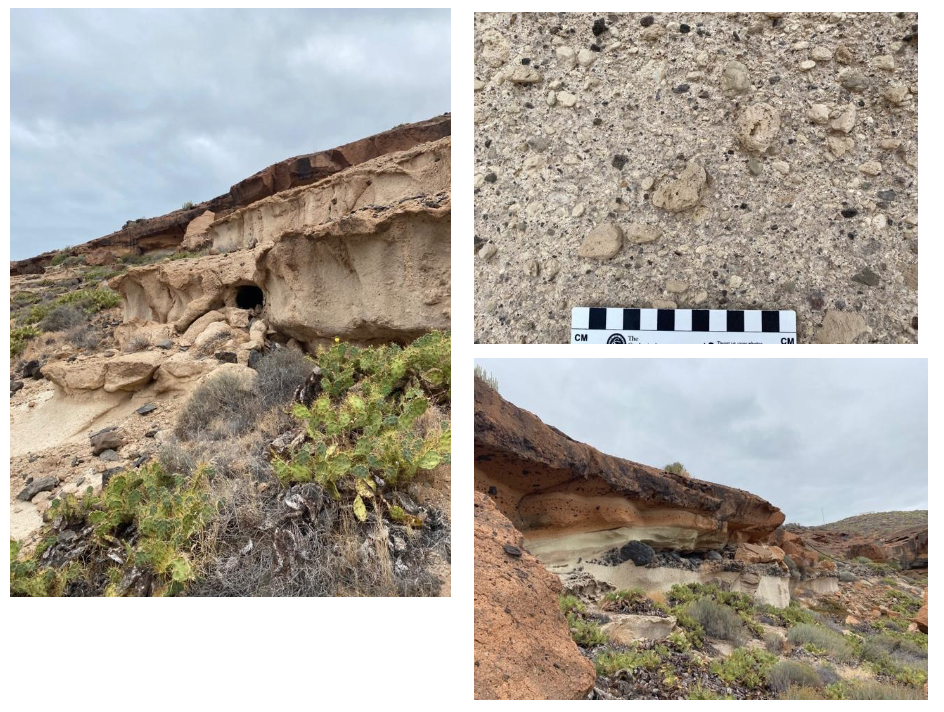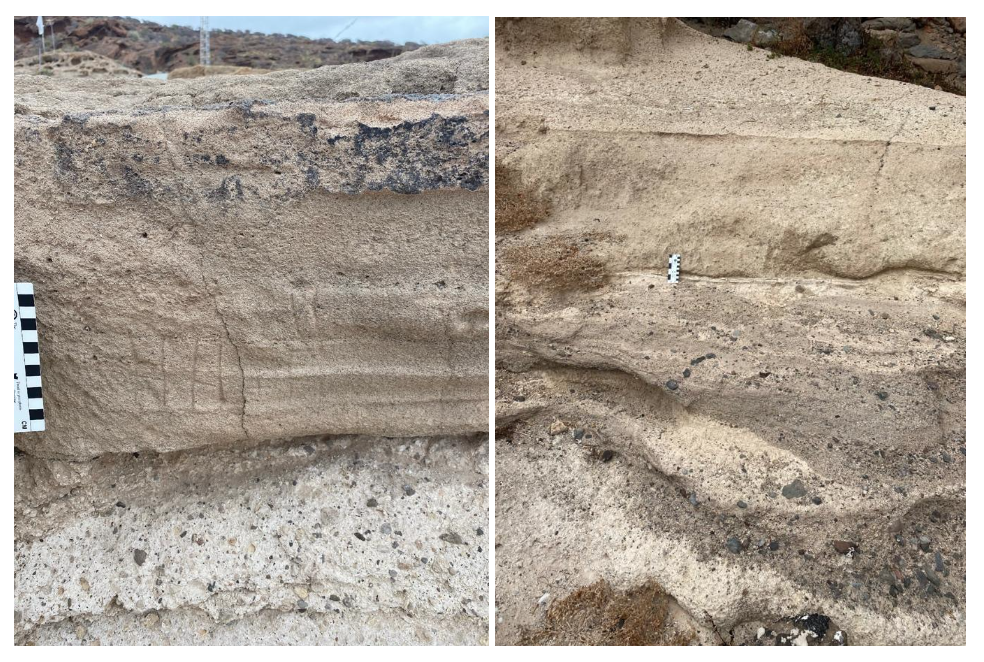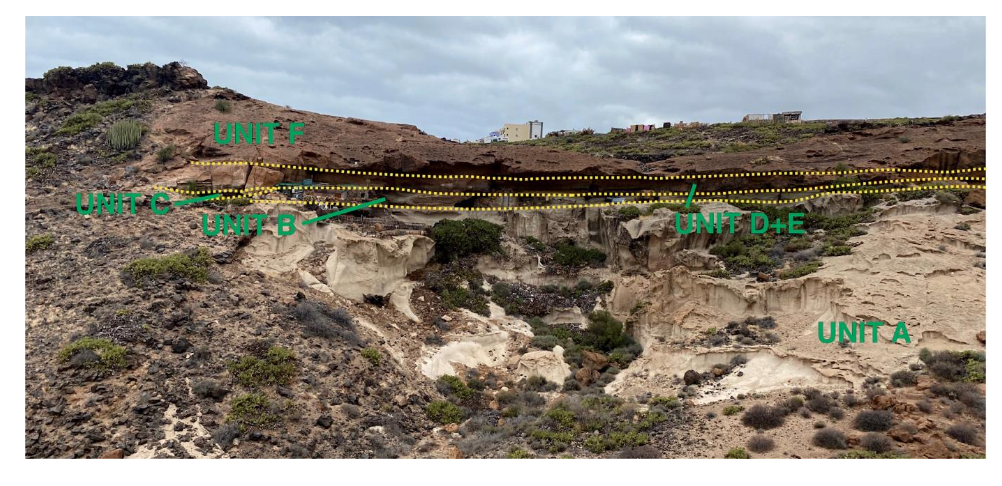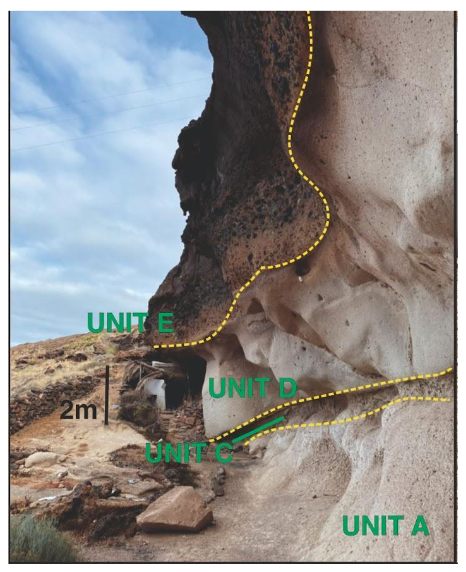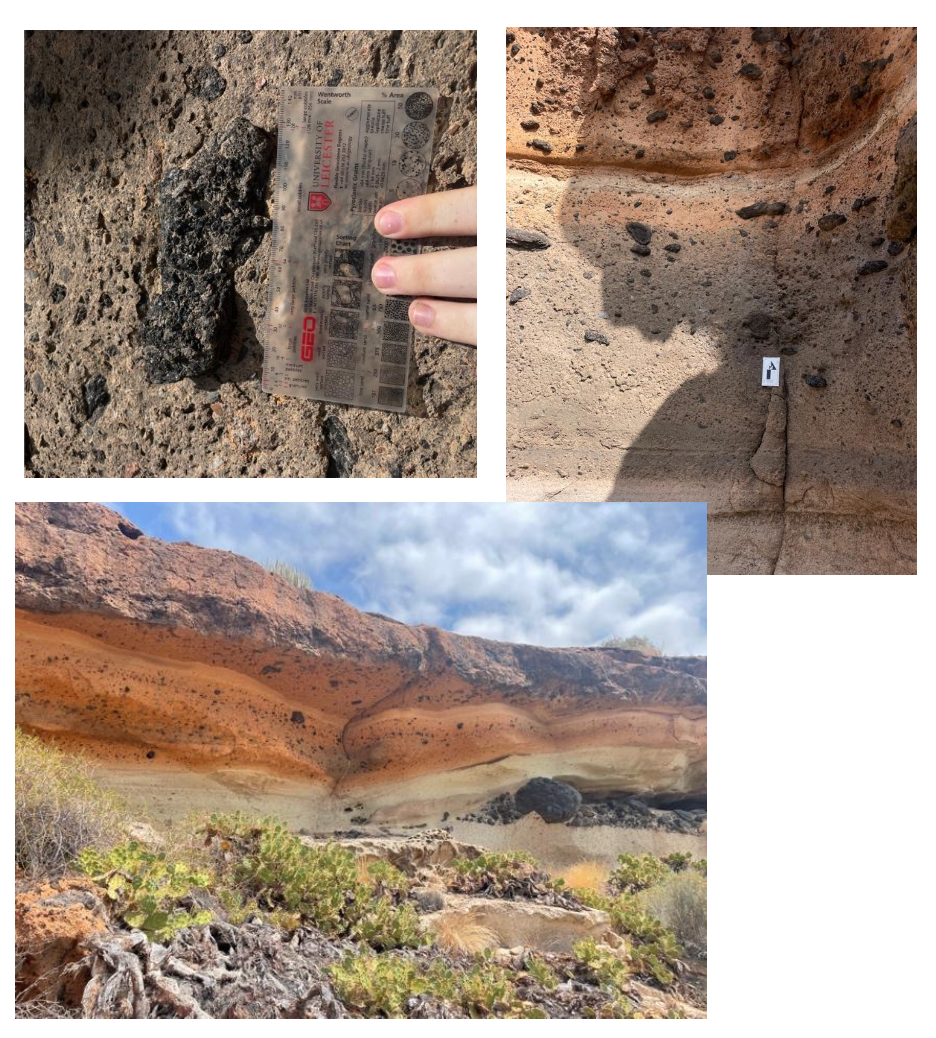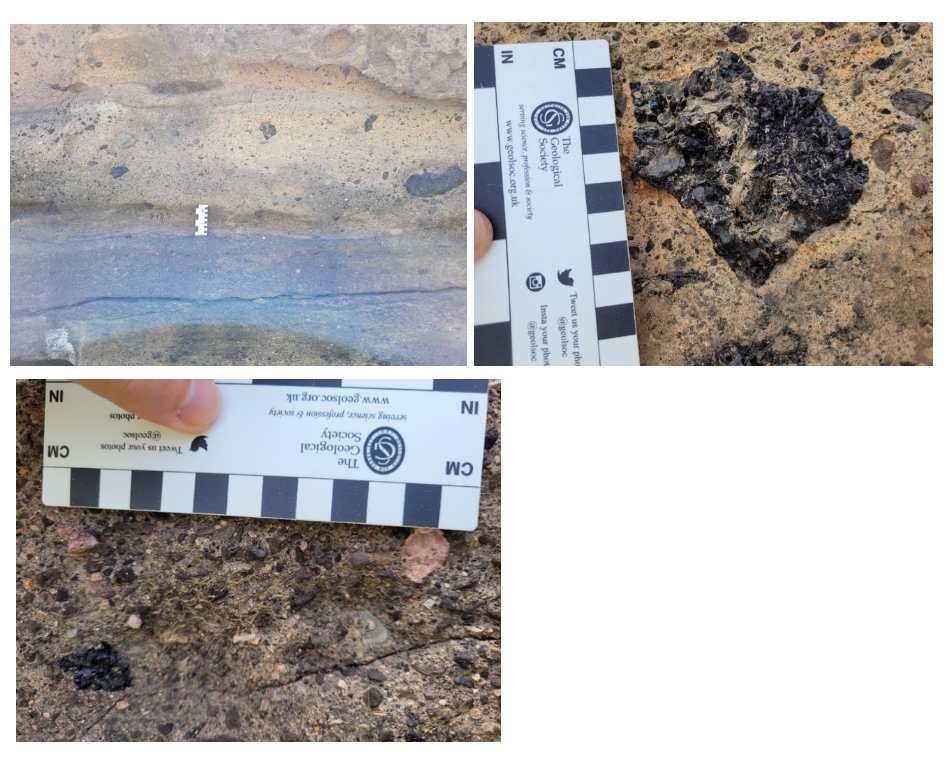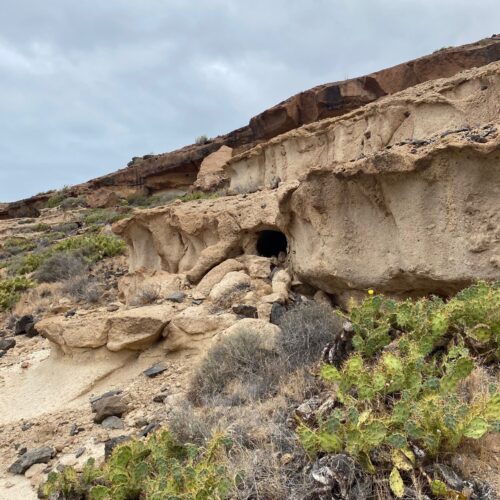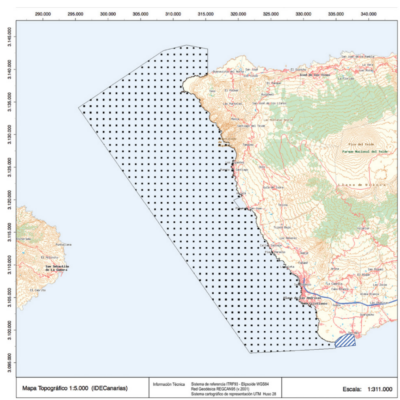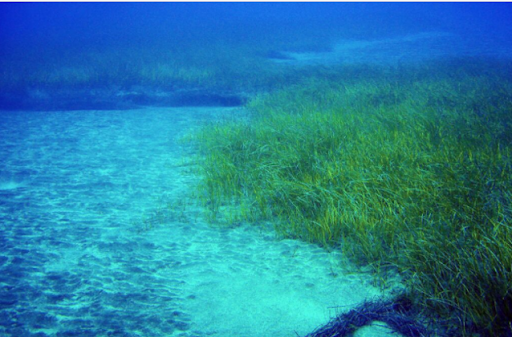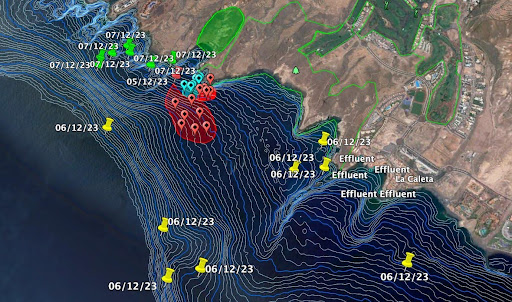The impact of Cuna del Alma – Full report
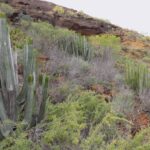
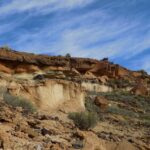
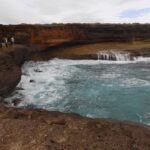
Tenerife has an exceptional diversity of flora, fauna, and geology, however, these fragile environments and their natural resources are under threat from unbridled tourism development; In 2023 6 million tourists visited Tenerife, and yet almost 30% of residents are at risk of poverty (Statistica, 2023). Building more hotels on a cramped strip forces residents further and further away from the coast they have a right to and the residents continue to suffer the consequences of the low-quality jobs and high cost of residential housing. It is imperative to rethink the tourism model of Tenerife.
In this report, Puertito de Adeje is in the spotlight, economic and political interests clash with the residents’ desire to preserve one of the last natural enclaves on the southern coast of Tenerife and fight for more equitable, sustainable development for future generations. Foreign investors are offered disproportionately advantageous terms for investment here, but at what cost? See our interview for the UK broadcaster ITV Tonight here.
This document is the culmination of a year’s worth of research by GeoTenerife, our students and a range of local, national and international experts to highlight the extraordinary natural and human values that coexist in Puertito de Adeje. This subject is so controversial many of our collaborators have asked to stay anonymous. This project is not finished – we will keep monitoring and researching the area in the coming months, but we are publishing our early findings now because the moratorium on Cuna del Alma’s construction has come to an end and we are determined to fuel a debate locally which we believe is long overdue. We welcome comments, corrections and additions: please email enquiries@geotenerife.com.
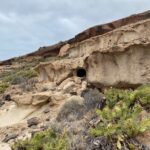

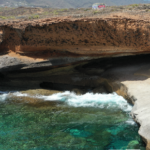
Introduction
The surroundings of Puertito de Adeje are made up of a variety of spaces and natural elements that together constitute a valuable mosaic of high ecological value. Some of these spaces and elements have legal protection, so there are regulations or laws aimed at their preservation and conservation.
Despite being partially modified, it is a coastal enclave that remains undeveloped and has not yet been occupied by large constructions destined for tourism. It therefore preserves the natural coastal habitat of this part of the island. However, it has not escaped human pressure and environmental disturbance due to the neglect and misuse of natural areas, neglect by the authorities and the construction of the ‘Cuna del Alma’ tourist project.
This document aims to present the different natural values that coexist in this environment, to make them known to the island community and visitors, and to contribute to the defence of this place against the environmental aggressions that, unfortunately, seem to have been normalised by some authorities, promoters of large-scale tourism and some sectors of the population.
The tourism landscape is undergoing significant changes. There is a growing awareness among travellers that they are looking for authentic and original destinations. In the UK, 60% of travellers express an interest in sustainable holidays. The Canary Islands are world-renowned for their exceptional diversity of flora, fauna and geology. However, these fragile environments and their natural resources face threats from excessive tourism development.
It is imperative to rethink our strategy and show respect for our environment. This action not only benefits our islands but also responds to the concerns of Canary Island residents, who perceive that their landscapes are being compromised in favour of overwhelming development that increasingly brings them fewer benefits. The Canaries receive a record number of visitors each year. Despite this, the region still has very high unemployment figures. The unemployment rate in the Canary Islands is the third highest in Spain, behind Andalusia and Extremadura. The island of Tenerife receives more than 5 million tourists a year. The massive invasion of tourism on the coast means that residents are forced to move further and further away from the coast and suffer the consequences of the low supply of residential housing and the loss of quality of life.
In this context, the Puertito de Adeje is in the spotlight, where economic and political interests clash with the desire of the residents to preserve one of the last natural enclaves on the south coast of Tenerife. Let us not forget that the local population of a region must have the right to enjoy the natural riches of its territory. The common general interest is the only one that adds up in society and this should be above the interests that concentrate great wealth, at the cost of destroying the island, which is not distributed among the local population. The implicit value of the Canary Islands and their attractiveness is due to their nature, their culture and their people. The Canaries are a natural treasure, a rich land, which has been impoverished by uncontrolled and inadequate exploitation.
To better understand this issue, GeoTenerife has prepared this report in collaboration with local and international experts. It is important to note that this issue is so controversial that some contributors have chosen not to publicly express their cooperation. Looking to the future, GeoTenerife will continue to disseminate information about the area, and we will be attentive to the impacts of any activity in the area, publishing it, as always, in an open manner.
Natural values of the land that would be lost
Geology
by Katy Chamberlain, Volcanology Lecturer at Liverpool University, and Alexis Schwartz, Volcanologist and GeoTenerife Lecturer.
Natural habitats
The southwest of Tenerife has experienced considerable urban development with the construction of hotels, recreational complexes, theme parks and other infrastructures that serve and provide access to the influx of visitors. Undeniably, the development and construction of these facilities and infrastructures has consequences for the natural environment, resulting in pressure on natural habitats, or directly in their disappearance. This is particularly critical and controversial when habitats of Community interest are affected. Urban planning (the land-use plan), which is drawn up prior to any construction project, is a determining factor in ensuring that tourism development is compatible with the non-destruction of these habitats.
It is also noteworthy that the conflict between urban development and the protection of the natural environment arises from the intention to carry out a tourist project, the need for which is questionable, and not from the intention to build or fit out residential housing, which, unlike the former, does represent a real need for the island’s resident population.
These habitat types are natural sites which have been designated in order to facilitate their monitoring and effective management. They are listed in Annex I of Directive 92/43/EEC. When it is necessary to implement restrictive measures to ensure the conservation of a habitat, SACs (Special Areas of Conservation) are designated. If the measures are specifically aimed at guaranteeing the survival and reproduction of certain bird species, SPAs (Special Protection Areas for Birds) are established. These areas are protected areas under EU legislation and together they form the Natura 2000 network. The Natura 2000 network is a European ecological network of protected areas created to conserve biodiversity and ensure the long-term survival of species and natural habitats, to halt the loss of biodiversity and to ensure that the objective of the Habitats Directive is achieved.
European legislation does not require the establishment of protection for natural habitats of Community interest when they are not part of the Natura 2000 network. However, basic Spanish legislation (art. 46.2 of Law 42/2007) states that “The competent bodies, within the framework of the procedures provided for in the environmental assessment legislation, must adopt the necessary measures to avoid the deterioration, pollution and fragmentation of habitats and disturbances affecting species outside the Natura 2000 Network, insofar as these phenomena have a significant effect on the conservation status of these habitats and species”. In parallel (art. 48) and both for HNIC, inside and outside Natura 2000, the public administrations “[…] shall monitor the conservation status of habitat types and species of Community interest, taking particular account of priority natural habitat types […]” and also “[…] shall send to the Ministry of Agriculture, Food and the Environment information on changes in conservation status […]”.
This means that the state of conservation of habitats designated by the Habitats Directive must be monitored or supervised, whether or not they are included in the Natura 2000 Network. Therefore, in terms of impact prevention, there is an obligation to avoid their deterioration and fragmentation.
El Puertito
Four types of habitats of Community interest present in the southwest of Tenerife are listed below. Emphasis is placed on the presence of these habitats in the area of Puertito and La Caleta de Adeje, which is currently under threat from the construction of the “Cuna del Alma” tourist megaproject.
Code: 1110. Sandbanks that are permanently covered by shallow marine water.
Permanently submerged sandbanks and sandy bottoms, covered or not by phanerogams and algae meadows, and sheltering a diverse fauna.
Refers to accumulations of sand on the seabed that are usually found in shallow water, generally at depths of less than 20 metres. These sites may harbour seagrass beds, known as sebadales, together with seaweed. These marine formations provide important habitats for invertebrates and fish, serving as refuge, breeding and feeding areas. In this region, seagrass meadows are dominated by Cymodocea nodosa, commonly known as “seba”, and by Halophila decipiens, known as “sand leaf”, and have a diverse fauna associated with them.

Code: 5330. Thermomediterranean and pre-stepic shrublands.
Shrublands of very different nature and physiognomy have in common the fact that they occur in the warmest vegetation levels of the Peninsula and the Canary Islands, except those included in other habitats.
These thickets, adapted to hot, dry climates, are home to species such as the Canary Island cardon (E. canariensis), tabaiba (E. balsamifera), among others, as well as apocynaceae (Ceropegia) or fleshy compositae (Kleinia), and species such as Aeonium, Echium, etc. These thermophilic scrublands are home to endemic Canary Island lizards and the cacti provide a habitat for an interesting invertebrate fauna.

Rocky marine habitats and substrates of biogenic origin, submerged at least at high tide, which may extend out of the water to form coastal cliffs or deeper offshore.
Includes partially or totally submerged rocky environments built by corals or molluscs. The fauna associated with reefs is very rich. In addition to their incalculable ecological value, reefs are important carbon dioxide sinks (CO2 ), i.e. they store carbon dioxide. They therefore play a very important ecosystem role in the ocean. The intertidal zones (flooded at high tide) have green and brown algae and red calcareous algae. The inframareal zone (always flooded) contains brown algae, polychaetes, madrepores, white corals, gorgonians, bivalves, sponges, bryozoans, barnacles, barnacles, and mobile species of crustaceans, cephalopods and fish.
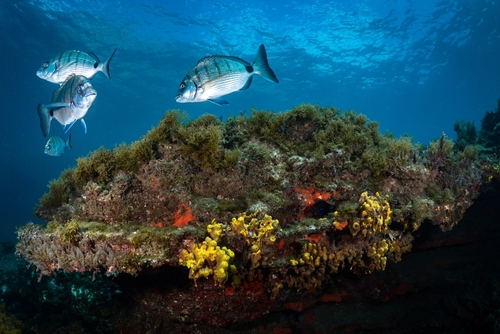
Code: 1250. Cliffs with endemic vegetation of the Macaronesian coasts.
Cliffs and steep coasts of the Canary Islands coastline with aerohalophilic plant communities constitute the first coastal vegetation band. Steep coasts and cliffs with plant communities resistant to salty air form the first strip of vegetation by the sea. These cliffs, made up of volcanic rocks, support vegetation adapted to rocky environments near the coast, and as we go further inland, we find species that make up the tabaibal-cardonal (habitat 5330). The Canarian cliffs also have a rich birdlife of endemic species and are home to giant Canary Island lizards.

The Teno-Rasca Marine Strip Special Conservation Area
The Teno-Rasca marine strip, declared a Special Area of Conservation (ES7020117) in 2011, stretches along the entire western coast of the island of Tenerife, including the bay of Puertito de Adeje. The purpose of the SAC, as its name indicates, is to delimit an area, marine or terrestrial, destined for the integral conservation of the habitat. It is an area protected by the EU.
According to the Ministry for Ecological Transition and the Demographic Challenge, the Teno-Rasca Marine Belt SAC is managed in such a way as to guarantee the protection and conservation of the natural habitat types and species of Community interest present in the area, adopting the necessary conservation measures to achieve a sustainable balance between the development of uses and activities in the area and the conservation of the natural values it contains. In other words, it is an area of recognised ecological importance whose conservation is imperative, with a series of rules to support it, and which is managed with public resources.
The area has important sandbanks (habitat 1110) without vegetation and also on which sebadales, maërl beds and other biological communities develop. There are also reefs (habitat 1170), rocky substrates on which benthic communities of animal and algae species with an important ecological function live; and marine caves (habitat 8330) which are the ideal habitat for sponges, corals, and bryozoans, among other invertebrates.
It is home to loggerhead turtles (Caretta caretta), green turtles (Chelonia mydas), hawksbill turtles (Eretmochelys imbricata) and leatherback turtles (Dermochelys coriacea). The loggerhead and green turtles are endangered in Europe and both have been designated as priority species under the Habitats Directive. Juvenile loggerhead turtles from American and Cape Verdean populations are found feeding and developing in the Canary Islands archipelago. The green turtle is found in environments close to the coast, shallow and associated with the presence of well-developed sebadales on which they feed, while the other two turtle species have a more irregular presence in the area.
The site offers warm, calm, deep waters close to the coast, which favour the presence of cetaceans, of which up to 22 different species have been recorded, all of which are protected by the habitats directive. Some populations reside in the area all year round, such as the bottlenose dolphin (Tursiops truncatus) or the short-finned pilot whale (Globicephala macrorhynchus). Due to their number and diversity of cetaceans, the islands of Tenerife and La Gomera have been recognised as a Whale Heritage Site by the World Cetacean Alliance (WCA). This distinction is the first to be awarded in Europe and the third in the world, after Harvey Bay in Australia and The Bluff in South Africa.
The fish community in the area is represented by at least 358 species, such as the trumpetfish (Aulostomus strigosus), the blue megrim (Aluterus scriptus), the catalufa (Heteropriacanthus cruentatus), the spiny drum (Chilomycterus atringa) or the blue jack mackerel (Caranx crysos).
The Habitats Directive imposes a legal obligation to avoid deterioration of SACs. Furthermore, Article 6(3) states: any plan or project which, although not directly connected with or necessary for the management of the site, is likely to have an appreciable effect on such sites, either individually or in combination with other plans and projects, shall be subject to appropriate assessment of its implications for the site, taking into account the site’s conservation objectives. In the light of the conclusions of the assessment of the implications for the site and subject to paragraph 4, the competent national authorities shall agree to such a plan or project only after having ascertained that it will not adversely affect the integrity of the site concerned and, if appropriate, after having submitted it to public information.
It is widely known that the “Cuna del Alma” urban development project did not have environmental impact assessments approved when the works began, nor does it appear that the possible impact that the project could have on the marine ecosystem derived from the modification of the beach, the artificial contribution of sand, the management of wastewater, the mobilisation of large quantities of land close to the coast, modification of the gully adjacent to the bay, etc., was contemplated. In addition to this, it appears that the protection regulations in this area are not always respected. In our field trips, we have found that it is common to see boats having parties in the sea and approaching metres from the coast, towards the Puertito and Caleta de Adeje, where they can be seen anchored together with other boats, especially in the tourist season.
Site of Scientific Interest La Caleta

Adjacent to the Puertito de Adeje is the Site of Scientific Interest (SSI) of ‘La Caleta,’ which, in turn, borders the special conservation area of the Teno-Rasca marine strip. According to the Law of Natural Spaces of the Canary Islands, a Site of Scientific Interest is defined as “those natural places, generally isolated and of reduced dimensions, where there are natural elements of scientific interest, specimens, or populations of animals or plants threatened with extinction or deserving of specific temporary conservation measures.” The area of this SSI is considered an “area of ecological sensitivity,” and its purpose is the conservation of seabird communities and the landscape in general.
Criteria underlying the protection of the SSI ‘La Caleta’:
- It is home to some of the main natural systems and terrestrial habitats characteristic of the Canary Islands archipelago, made up of halophyte plants, tabaibales and cardonales that inhabit the cliffs.
- It is home to animal or plant populations included in both the Spanish Catalogue of Threatened Species and the Canary Islands Catalogue of Protected Species.
- It contributes significantly to the maintenance of the archipelago’s biodiversity, providing habitat for 53 vascular plant taxa and at least 48 animal species.
- It includes areas of vital importance for certain phases of the biology of animal species, such as breeding and nursery areas for seabirds, refuges for migratory species and the like.
- It is home to well-preserved geomorphological structures representative of the island’s geology, such as tuff deposits, coastal cliffs and beach sand deposits.
- It contains natural elements that stand out for their rarity or uniqueness or are of special scientific interest, such as the habitats for marine birds and the peculiar landscape in the south of Tenerife.
The SIC Conservation Rules document indicates the activities prohibited in the area, including the construction of any type of building, the opening of new roads or the modification of existing ones, the circulation of motor vehicles, any activity that could lead to the initiation or acceleration of erosive processes uses or activities that affect species listed as threatened or for which a need for protection has been established, as well as their capture, collection, alteration or destruction, the collection of any biological or geological material, etc.
In addition to a list of prohibited activities, the La Caleta SIC Conservation Rules document contains a list of permitted activities and a list of allowable activities. The aim of the conservation rules is to:
- Ensure the conservation of the main natural systems and terrestrial habitats of the SIC, especially coastal halophytes, tabaibales and cardonales.
- To ensure the conservation and protection of the coastal landscape, including its geomorphological structures.
- Ensure the recovery, conservation and protection of natural resources, especially seabirds.
- Facilitate measures for the recovery and improvement of the area’s landscape.
- Prevent the development of uses incompatible with the conservation of the ecosystem, as well as the new occupation of land.
- To regulate the uses related to public enjoyment of the space, as well as environmental research and education.
The same geological, flora and fauna characteristics are found in the Puertito area adjacent to the La Caleta SIC. However, this is not included within the protected area.
It is to be expected that large-scale urban development in Puertito de Adeje will generate ecological pressure on the SIC area of La Caleta, a small and limited area already occupied by a large golf course, and it is also to be expected that the ecological pressure will affect the SAC of the Teno-Rasca marine fringe and the rest of the habitats of Community interest that are present in the area and that make up this mosaic of prestigious natural value.
Marine environment
By Silvia Paglia, University of Milano Bicocca, and Laurence Lane, University of Leicester
Introduction
Cymodocea nodosa is the most important seagrass distributed along the eastern Atlantic Coast including the Macaronesian oceanic archipelagos of the Canary Islands and Madeira (Oliva et al., 2012). Seagrasses form extensive meadows (Green and Short, 2003) and are a vital marine ecosystem in sandy bottoms.
Seagrass meadows serve as a nursery habitat for fishes and invertebrates (Honda et al., 2013; Jackson et al., 2001). Seagrasses also provide important regulating services such as improving water quality by increasing sediment settling (Ward et al., 1984), nutrient retention (Verweij et al., 2008), and protecting the coastline from turbulent waves (Koch et al., 2006; Paul, 2017). More recent scientific studies have been focused also on the potential carbon sequestration in seagrasses (Kennedy et al., 2010).
However, a study by Espino et al. (2015) has shown a decrease in coverage of seagrass in the islands of Gran Canaria, Lanzarote, Tenerife, and Fuerteventura. Waycott et al. (2009) attribute deterioration in seagrass meadows to five primary serious factors, often in combination: over-exploitation, physical modification, nutrient and sediment pollution, the introduction of non-native species and global climate change.
The genus Caulerpa prolifera is a green algal species with a worldwide distribution in tropical and subtropical shallow water marine habitats (Famà et al., 2002). It is typically common in areas with high organic matter content and bays with low flow where it forms meadows or patches. The colonisation of a new area by C. prolifera is driven by boat anchoring that can fragment algae and transport them into new places. C. prolifera is an opportunistic alga that often replaces C. nodosa by out-competing the seagrass for nutrients in the sediment (Ceccherelli and Cinelli, 1997).
Furthermore, Tropical algae are an ever-growing threat to the unique biodiverse volcanic islands and archipelagos of Macaronesia (Cerrato et al., 2023). For the Canary Islands, Halimeda incrassata (Fig. 5) has begun to impose itself into the ecosystems and coastal niches of which Cymodocea nodosa (sebadales) are endemic to. This invasive transition has been observable from the west as the tropical Caribbean calcareous macroalgae. Halimeda incrassata established itself in La Palma (Sangil et al., 2018) before becoming detectable in southwestern Tenerife. The inversion of Seagrass meadows to a Halimeda incrassata patch also impacts the carbon being absorbed from the atmosphere into the marine plants; H. incrassata dramatically reduce the dissolved organic carbon in the water.
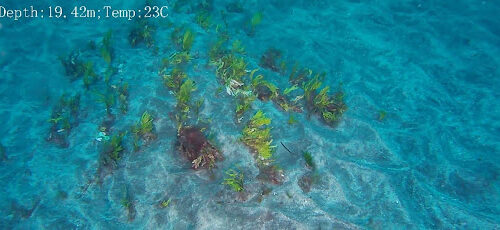
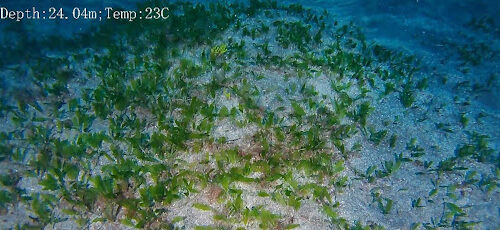
Methods
The primary objective of this section of the report was to identify and catalogue the seagrass and algal marine biodiversity of El Puertito de Adeje. This was achieved through drone footage conducted between 04 – 07/12/2023 of terrestrial, coastal, and deep-water environments. Furthermore, an investigation into the human sources of effluent along Southern Tenerife All sampling locations are depicted in the Figure below.
Results
C. nodosa (Seagrass) has been suffering a constant reduction since the mid-1990s (Waycott et al., 2009). The reasons are numerous and C. prolifera (Green algae) may be partially contributing to the reduction of C. nodosa, despite both C. prolifera and C. nodosa being native to South Tenerife, some environmental variable(s) must have changed to alter the coexistence equilibrium between the species in favour of C. prolifera. Thus, Caulerpa prolifera is replacing Cymodocea nodosa in El Puertito likely due to human activity changing the environment in the area. Alternatively, Tuya et al. () have shown how the Canary Islands are exposed to oceanic currents and large turbulence induced by waves which may have caused the removal of large quantities of C. nodosa.
Throughout the investigation, the presence of H. incrassata, an invasive algae species, became increasingly prevalent and dominant within the environment, in depths from 15m-52m. As the turbidity (amount of sediment in the water) and temperature remained relatively consistent, it can be inferred that the increased presence of H. incrassata is caused by another environmental factor, such as an increase in observable calcareous (composed of calcium carbonate) deposits with depth (Fig. 11.C). However, the primary driver of increasing Halimeda incrassata is temperature change, hydrodynamic changes, and increased nutrients due to effluent or eutrophication (Davis and Fourqurean, 2001).
Different studies have shown that anthropogenic pressures on the coast are a fundamental reason for the global deterioration of seagrasses such as water contamination (Waycott et al., 2009) and increased turbidity (Burkholder et al., 2007). If anthropogenic activity is the primary cause of rapid ecosystem change thus it was important to compare the ecosystem of El Puertito de Adeje with another location. This was conducted in the near marine environment of Puerto Colòn (Figure 12) where a similar rocky coast and sandy substrate was located. The discovery of an underwater pipe (Figure 12.A) within a known area of effluent pollution (Grafcan, TIS) and a lack of any C. nodosa, C. prolifera, or H. incrassata were the key observations made here.
Comparatively, both rocky coast and marine surface substrate from El Puertito de Adeje (Figure 12.B and 12.D) showed a healthier biodiverse ecosystem with significantly less resuspended sediment than the Puerto Colòn. Biota is visibly more vibrant, and sediment naturally occurs with stabilisation via vegetation.
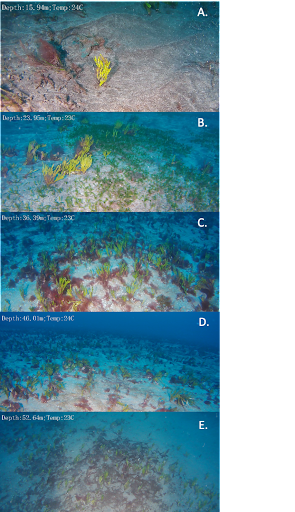
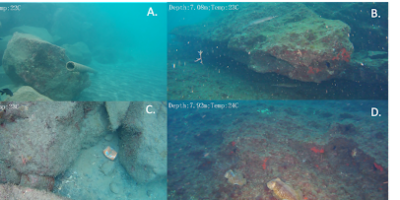
Discussion
The incursion of tourism-induced activity into vulnerable ecosystems is becoming more common, and the policies in place have been ineffective in preventing both invasive species and enforcing restrictions.
Human activity is already affecting areas such as La Caleta and El Puertito de Adeje. The prevalence of invasive species in the El Puertito de Adeje marine environment shows that these ecosystems must be protected before it is too late. Hence, the Cuna del Alma project presents severe dangers to a plethora of ecosystem systems, habitat viability, and challenges to the people dependent on such environments.
In conclusion, the Cuna del Alma project constitutes an existential risk to a unique and vulnerable ecosystem within southwestern Tenerife. Applications of future study could expand on the changing marine environment through invasive species highlighted in this report, formally investigate the changing physical parameters of turbidity and DOC and begin to investigate the anthropogenic effects on the hydrology of the bay.
Vegetation and soil
The soils of the topographically lower areas of the islands have been historically exploited from aboriginal livestock farming, through exploitation for firewood, cochineal production, sugar cane, tomato, banana and greenhouse crops, to the development of tourism. This, together with the arid conditions of the environment, has led to its impoverishment, degradation and erosion. Currently, massive tourism activity is the main agent transforming the coasts, which has irreversibly modified and destroyed coastal ecosystems since the second half of the 20th century.
In the Puertito and La Caleta area, a large part of the land is used for agricultural purposes. The landscape of the area is partially modified by plots of crops, most of which have been abandoned, surrounded by the vegetation typical of Canarian coastal scrubland. The transformation of the soil can be seen in the terracing found in the topographically higher areas and in the lower course of the ravines. However, this is one of the few coasts in the south-southeast of the island that has remained unmodified on a massive scale, and it is therefore an enclave that preserves the native fauna, flora and geological values.
Coastal shrub community
The tabaibal-cardonal is the mature community of coastal scrub that characterises the Canarian vegetation of lowland and coastal areas. It is made up of numerous endemic species, both from the archipelago as a whole and specific to certain islands, and other non-endemic species. These include the sweet tabaiba (Euphorbia balsamifera) and the cardón (Euphorbia canariensis), which give the community its name. Also of note are the bitter tabaiba (Euphorbia regis-jubae), the verode (Kleinia neriifolia), the cornical (Periploca laevigata), the woody wood (Convolvus scoparius), the gorse (Launaea arborecens) and the tasaigo (Rubia fruticosa), among others. It is the habitat of endemic animal species, such as the blight lizard, but especially for invertebrate animals. These communities are home to endangered species, and therefore included in the national and Canarian catalogues of endangered species, such as the sad viburnum (Echium triste). The cardón is of great importance for other plant species, as a considerable number of shrubs are associated with it, either because they take advantage of the microclimatic conditions offered by its candelabra-shaped stems, which can reach large dimensions, or because it offers protection to certain species such as the cornical. In the shelter of this vegetation, birds adapted to the arid climate also nest, such as the southern grey shrike (Lanius meridionalis koenigi), the black warbler (Warbler conspicillata), the great crested pipit (Anthus berthelotii) and the common stone curlew (Burhinus oedicnemus). In addition, a well-preserved tabaibal-cardonal is a barrier against the expansion of exotic species, as native species are better competitors in the face of adverse environmental conditions that occur in this habitat, such as water stress.
This community is recognised in habitat type 5330 of the habitats of Community interest of the European Union. In the past it was much larger in extent, but the historical evolution of this vegetation has been very negative. The extent of the present-day tabaibal-cardonal could be 15-20 % of the original distribution. It is expected that over time the coastal scrub will naturally regenerate in abandoned cultivated areas that are not subject to further disturbance. However, where transformation and impact on the original natural habitat has been profound, the process of spontaneous regeneration does not work and requires the design of an ecological restoration project.
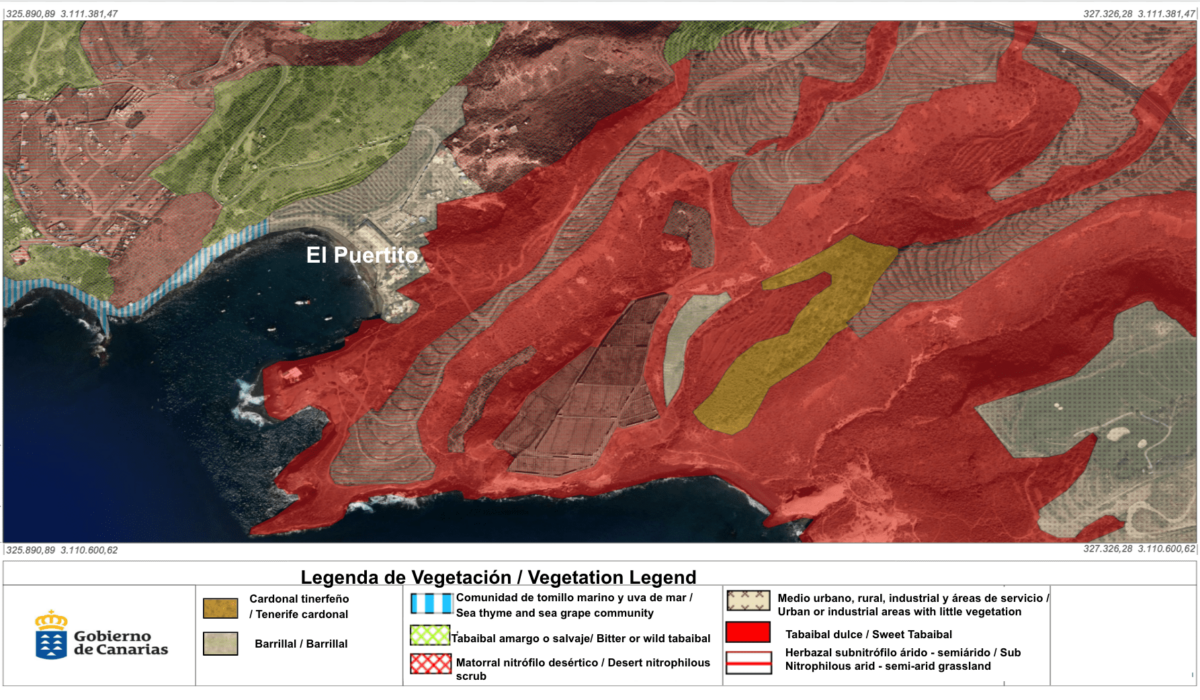
Whether in other natural areas or in urbanised public spaces such as planters, replanting is not a real solution, as it implies the destruction of their natural habitat and the loss of the ecosystem making it difficult to guarantee the survival of the specimens. Moreover, endangered species are represented by one or very few populations, so there is a high risk of loss. This risk has materialised with the start of the project works, which have moved large quantities of earth and uprooted plant specimens which have been left to die.
The urban transformation of this site means the loss of one of the few relicts of well-preserved coastal scrubland that persists in the south of Tenerife and which has endemic taxa that do not exist elsewhere. In conclusion, it is always necessary to carry out a review of the plant communities and specimens in an area in order to evaluate their content and state effectively, and thus prevent possible environmental aggressions that may be carried out due to ignorance or oblivion of their ecological importance.
What has been happening in El Puertito?
Greenwashing
by Steven Godby Principal Lecturer at Nottingham Trent University.
With an ever-increasing number of tourists demanding more sustainable holidays, the language of sustainability is being used to sell holidays. But how accurate are they, and how is the Cuna del Alma resort using sustainable language to mask the real impacts of the project?
The seven sins of greenwashing were identified by Terrawatch in 2007 to assist consumers in identifying and understanding misleading and/or false environmental claims:
- The sin of the hidden trade-off. This sin focuses on one narrow pro-environmental attribute whilst neglecting to bring attention to more important and wider environmental issues of relevance.
- The sin of no proof. As the name suggests, this sin is committed if environmental claims are made without any credible evidence to support them.
- The sin of vagueness. This sin relates to claims that are broad and not clearly defined, which are consequently likely to be misunderstood by consumers.
- The sin of worshipping false labels. This sin is committed by companies who create ‘sustainability’ certifications or labels that are simply false. These can mislead consumers by creating the illusion that a product or service has been independently certified as environmentally sustainable through a legitimate third-party screening process when this is not the case in reality.
- The sin of irrelevance. This relates to environmental claims that may be truthful but unimportant due to quite simply being irrelevant.
- The sin of the lesser of two evils. This sin relates to environmental claims of products that are inherently damaging to the environment. While all products use natural resources and energy to some extent, some industries and products are more environmentally damaging than others.
- The sin of fibbing. The final sin describes false environmental claims.
These sins are sometimes considered to be product-level greenwashing. Scanlan (2017) cited in de Freitas Netto et al. (2020) proposed additional sins related to the conceptualisation of greenwashing based on research in the oil and gas industry:
- The sin of false hopes: a claim that reinforces false hope.
- The aim of fearmongering: claims that fabricate insecurity related to not “buying in” on an organizational practice.
- The sin of broken promises: claims promising that activity will lift up poor, rural communities, but evidence shows the contrary leaving communities with irreversible impacts.
- The sin of injustice: environmental communication focuses on a segment of the population that benefits from an activity but does not suffer its consequences.
- The sin of profits over people and the environment: potentially the greatest greenwashing sin of all according to Scanlon (2017).
The following text explains how quotes taken from the Cuna del Alma ‘Eco-Manifesto’ page are examples of greenwashing:
Change in land protection
Law 4/2017, of 13 July, on Land and Protected Natural Spaces of the Canary Islands, establishes the regulations and guidelines for the use and management of land in the Canary Islands. It is the legal instrument used by municipalities in the elaboration of their land use plans, which assign a class of land (urban, urbanisable or rustic) to each territory.
In the area of Puertito de Adeje there are two main types of land: rustic and developable. Rustic land is land that has not been urbanised and has not been classified as developable. They may be excluded from transformation if they are subject to a regime of environmental, landscape or historical heritage protection in the Canary Islands, or are worthy of such protection in order to maintain their characteristics of natural, landscape, cultural, scientific, historical, archaeological or environmental value; also due to the existence of natural or technological risks, and when their preservation is appropriate due to their agricultural, livestock, forestry, hunting, mining or natural wealth.
Once the elements or characteristics present in a territory classified as rural land are known, a series of categories and subcategories are established. Currently, the following are found in the Puertito area:
- SRPT1: Rustic Land of Territorial Protection. This category corresponds to the common rustic land (SRC) according to the Land Law.
- SRPC: Rustic Land for Coastal Protection. It corresponds to the maritime-terrestrial public domain and is protected by the Coastal Law.
- SRPI: Rustic Land for Infrastructure Protection. Intended for the construction of new roads.
- SRPP: Rural Land for Landscape Protection. It corresponds to the Site of Scientific Interest of La Caleta.
Land for development is destined for urban transformation. To classify new land for development, a series of criteria must be considered, which are set out in the same law. In addition to this, rural land with any of the above-mentioned types of protection or value cannot be declassified. It is therefore essential to recognise the presence of these values in land-use plans, as their omission could favour the loss of natural and cultural elements that must be preserved, as indicated in the law.
The current development plan for Puertito was approved by Adeje Town Council on 1 March 2019 (Aprobación definitiva de la revisión parcial 02 del Plan General de Ordenación de Adeje en el ámbito del Sector SO6 Puertito de Adeje, BOC 096/19 and BOP de Santa Cruz de Tenerife 087/19), and consists of the sectorisation of land for development (SUOR) in the Puertito area, earmarking it for a series of detailed uses including hotel buildings, tourist flats and other recreational facilities.
Residents of Puertito claim that they were not properly informed of the change in the classification of the land on which their homes are located, which is now classified in the current land use plan as urbanisable for commercial use. The plan can be consulted in GRAFCAN and in the Canary Islands Planning Database.
Taking into account the natural and cultural elements present in this territory, it would be advisable to adjust the land-use plan to preserve them, either by extending the area of the S.I.C. of La Caleta or by redefining the sectorisation and detailed uses of the current plan. According to the law, land deserving some kind of protection must be classified as rustic land, in the sub-category corresponding to the element or feature to be protected (flora, fauna, geological heritage, landscape heritage, etc.). It would be appropriate to restore the areas to be protected or, in the case of natural systems, to provide them with the necessary conservation conditions to allow their natural restoration.
Conclusion
The Cuna del Alma presents itself on its ‘Eco-manifesto page’ as environmentally sustainable and caring about protecting biodiversity. Our analysis of these claims finds that there lacks much evidence to support the claims made furthermore, our research of the vegetation, geology, habitats, and marine environment shows that the environment will be negatively affected by the Cuna del Alma project’s construction.
Most deposits produced by explosive eruptions (“ignimbrites”) of the Las Cañadas volcano have been destroyed by erosion given their old age and human activity; only a small proportion of them has been preserved in the geological record. El Puertito contains some of the best-preserved outcrops of the Adeje and Fañabé ignimbrites from eruptions over 1.5 million years ago. Unit D, E, and F of the Adeje eruption show evidence of partial welding, which is not just particularly rare in Tenerife but of international scientific interest.
El Puertito contains four types of habitats for community interest: sandbanks, reefs, Mediterranean shrubland, and Macaronesian cliffs, all of which are usually protected to conserve and protect the ecosystem functions they provide for species. Not only, are El Puertito’s habitats of community interest not protected, but they are also actively threatened to become deteriorated or fragmented by the construction of the Cuna del Alma project.
The shrubland present in El Puertito provides habitats to birds such as the grey shrike. The extent of the present-day tabaibal-cardonal is only 15-20 % of the original distribution.The urban transformation of this site would cause the loss of one of the few remaining relicts of well-preserved coastal scrubland that persists in the south of Tenerife.
The marine environment of El Puertito has already started to suffer from human activity caused by invasive species colonisation; pollution from the South coast of Tenerife is causing the seagrass meadows to be outcompeted by species of tropical algae and boat anchoring is causing native species of algae to replace seagrass meadows. The ecosystem functions that seagrass meadows provide are vast and at risk: providing nursery habitats to fish, improving water quality, and reducing turbulent wave destruction. This will have impacts across the marine ecosystem surrounding El Puertito.
El Puertito has been designated as “Land Suitable for Planned Urban Development”, despite neighbouring the La Caleta Site of Scientific Interest and the Teno-Rasca Marine Special Area of Conservation. To maintain the conservation aims of the currently protected zones and to preserve the identified unique geology, ecology, and archaeological features of El Puertito we propose that the La Caleta environmental protection zone be extended to cover El Puertito and introduce a Cultural Protection Zone.
Thank you for reading our report. Please share these resources freely with anyone interested in sustainable tourism in Tenerife. We would like to deeply thank our many collaborating researchers and the students of GeoIntern 2023, MarineScience Camp 2022 and MarineScience Camp 2023 without whom this report would not exist:
Editors: Natalia Puche Polo, VolcanoStories Collaborator, Bsc, Sergio Parra, student of Universidad La Laguna, Ajay Wynne Jones, VolcanoStories Co-ordinator, MSci.
Collaborating Researchers and experts: Dr Katy Chamberlain, Alexis Schwartz, Dr Steven Godby, Pablo Dávila Harris, and Fernando Borràs Castelló (Drones4Geology).
Collaborating Students: Silvia Paglia (University of Milano Bicocca), Laurence Lane (University of Leicester), Sergio Parra-Alfaya (Universidad de La Laguna), Francesca Butler (University of Bristol), Ryan Hill (Royal Holloway University of London), Leah Gingell (University of Hull), Bangran Tang (The University of California, Davis), Will Green (University of Plymouth), Marcus Chaknova (University of Oregon), Emma Hadré (Universität Kiel CAU), and Emma Badenas (University of Barcelona).
References
- Alós, J., Tomas, F., Terrados, J., Verbruggen, H. and Ballesteros, E., (2016). Fast-spreading green beds of recently introduced Halimeda incrassata invade Mallorca island (NW Mediterranean Sea). Marine Ecology Progress Series, 558, pp.153-158.
- Ángel Mejías Vera, M. and Manuel Romeo Jiménez, V. 2022. The Degraded Insular Landscape in the Urban-Rural Interface – Application to the Urban Agglomeration of the South of the Island of Tenerife. In: Sustainable Development Dimensions and Urban Agglomeration. IntechOpen. https://islandstudiesjournal.org/files/ISJ.386.pdf
- Armas-Díaz, A., Sabaté-Bel, F., Murray, I. and Blazquez-Salom, M. 2020. Beyond the right to the island: Ecploring protests against the neoliberalisation of nature in Tenerife (Canary Islands, Spain). Erdkunde, 74, 249-262.
- Badalamenti, F., Di Carlo, G., D’Anna, G., Gristina, M., Toccaceli, M., (2006). Effects of dredging activities on population dynamics of Posidonia oceanica (L.) Delile in the Mediterranean sea: the case study of Capo Feto (SW Sicily, Italy). Hydrobiologia 555, 253–261
- Bianchi, R.V. 2010. Tourism Restructuring and the Politics of Sustainability: A Critical View From the European Periphery (The Canary Islands). Journal of Sustainable Tourism, 12, 495-529.
- Brown, R.J. et al. (2009) ‘Origin of accretionary lapilli within ground-hugging density currents: Evidence from pyroclastic couplets on Tenerife’, Geological Society of America Bulletin, 122(1–2), pp. 305–320. doi:10.1130/b26449.1.
- Burkholder J.M., Tomasko D.A., Touchette B.W. (2007). Seagrasses and eutrophication. J. Exp. Mar. Biol. Ecol. 350: 46-72. http://dx.doi.org/10.1016/j.jembe.2007.06.024
- Carracedo, J. C. (1984). El relieve volcánico. Geografía de Canarias, 1. Santa Cruz de Tenerife, Interinsular Canaria, 66-104
- Ceccherelli, G., Cinelli, F., (1997). Short-term effects of nutrient enrichment of the sediment and interactions between the seagrass Cymodocea nodosa and the introduced green alga Caulerpa taxifolia in a Mediterranean bay. J. Exp. Mar. Biol. Ecol. 217, 165- 177.
- Cerrato, M., Mir-Rosselló, P.M., Ferriol, P., Gil, L., Monserrat-Mesquida, M., Tejada, S., Pinya, S. and Sureda, A., (2023). Oxidative Stress Response in the Seaweed Padina pavonica Associated with the Invasive Halimeda incrassata and Penicillus capitatus. Water, 15(3), p.557.
- Criado, Constantino & Paris, Raphaël. (2006). Volcanic landscape and Geomorphological evolution of Tenerife Island.
- Cunha, A.H., E. Varela-Álvarez, D.S. Paulo, I. Sousa and E.A. Serrão. (2013). The rediscovery of Caulerpa prolifera in Ria Formosa, Portugal, 60 years after the previous record. Cah. Biol. Mar. 54: 359–364
- Dávila-Harris, P. et al. (2023) ‘The upper pleistocene (1.8–0.7 ma) explosive eruptive history of Las Cañadas, Ocean-Island Volcano, Tenerife’, Journal of Volcanology and Geothermal Research, 436, p. 107777. doi:10.1016/j.jvolgeores.2023.107777.
- Davis, B.C. and Fourqurean, J.W., (2001). Competition between the tropical alga, Halimeda incrassata, and the seagrass, Thalassia testudinum. Aquatic Botany, 71(3), pp.217-232.
- Duarte, C.M., Marbà, N., Gacia, E., Fourqurean, J.W., Beggins, J., Barrón, C. and Apostolaki, E.T., (2010). Seagrass community metabolism: Assessing the carbon sink capacity of seagrass meadows. Global biogeochemical cycles, 24(4).
- Duarte, C.M., Dennison, W.C., Orth, R.J.W., Carruthers, T.J.B., (2008). The charisma of coastal ecosystems: addressing the imbalance. Estuar. Coasts 31, 233–238. http://dx. doi.org/10.1007/s12237-008-9038-7
- ENACT Africa (2021) Canarian tourism industry built on Western Saharan Sand. Available at: https://enactafrica.org/enact-observer/canarian-tourism-industry-built-on-western-saharan-sand (Accessed: 08 January 2024).
- Fabbri F., Espino F., Herrera R., Moro L., Haroun R., Riera R., Heriquez G.N., Bergasa O., Monterroso O., Rosa R.M., Tuya F. (2015) Trends of the seagrass Cymodocea nodosa (Magnoliophyta) in the Canary Islands: population changes in the last two decades https://www.researchgate.net/publication/273316734
- Famà, P., B. Wysor, W.H.C.F. Kooistra and G.C. Zuccarello. (2002). Molecular phylogeny of the genus Caulerpa, Caulerpacea, Chlorophyta, inferred from chloroplast tufa gene. J. Phycol. 38: 1040–1050.
- Feagin RA. (2008). Vegetations’ role in coastal protection. Science 320: 176-77.
- Green, E.P., Short, F.T., (2003). World Atlas of Seagrasses. University of California Press.
- de Grissac, J., Audoly, A., (1985). Etude préliminaire des banquettes de feuilles mortes de Posidonia oceanica de la region de Marseille (France). In: Rapports de la Commission Internationale pour l’Exploration Scientifique de la Mer Méditerranée.
- Gueugneau, V. et al. (2020) ‘Dynamics and impacts of the May 8th, 1902 pyroclastic current at Mount Pelée (Martinique): New insights from numerical modeling’, Frontiers in Earth Science, 8. doi:10.3389/feart.2020.00279.
- Holmer, M., Marbá, N., Lamote, M., Duarte, C.M., (2009). Deterioration of sediment quality in seagrass meadows (Posidonia oceanica) invaded by macroalgae (Caulerpa sp.). Estuar. Coast. 32, 456–466
- Honda, K., Nakamura, Y., Nakaoka, M., Uy, W.H., Fortes, M.D., (2013). Habitat use by fishes in coral reefs, seagrass beds and mangrove habitats in the Philippines. PLoS One 8, e65735. http://dx.doi.org/10.1371/journal.pone.0065735.
- Jackson, E.L., Rowden, A.A., Attrill, M.J., Bossey, M.J., Jones, M.B., (2001). The importance of seagrass beds as a habitat for fishery species. Oceanogr. Mar. Biol. Annu. Rev. 269–303
- Jiménez-Ramos, R., Tomas, F., Reynés, X., Romera-Castillo, C., Pérez-Lloréns, J.L. and Egea, L.G., (2022). Carbon metabolism and bioavailability of dissolved organic carbon (DOC) fluxes in seagrass communities are altered under the presence of the tropical invasive alga Halimeda incrassata. Science of the Total Environment, 839, p.156325.
- Kennedy, H., Beggins, J., Duarte, C.M., Fourqurean, J.W., Holmer, M., Marbà, N., Middelburg, J.J., (2010). Seagrass sediments as a global carbon sink: isotopic constraints. Glob. Biogeochem. Cycles 24 (n/a-n/a). http://dx.doi.org/10.1029/ 2010GB003848.
- Koch, E., Ackerman, J.D., Verduin, J., van Keulen, M., 2006. Fluid dynamics in seagrass ecology–from molecules to ecosystems. In: Larkum, A.W.D., Orth, R.J., Duarte, C.M. (Eds.), Seagrasses: Biology, Ecology, and Conservation. Springer, Dordrecht, pp. 193–225
- Koch E., Barbier B.E., Silliman R.B., Reed J.D. et al., (2009) Non-linearity in ecosystem services: temporal and spatial variability in coastal protection
- Koch, E., Sanford, L.P., Chen, S., Shafer, D.J., Smith, J.M., (2006). Waves in Seagrass Systems: Review and Technical Recommendations.
- Kröchert, Jörg, & Buchner, Elmar. (2009). Age distribution of cinder cones within the Bandas del Sur Formation, southern Tenerife, Canary Islands. Geological Magazine – GEOL MAG. 146. 10.1017/S001675680800544X.
- Kurnaz, Ahmet. (2021). GREEN BUILDING CERTIFICATE SYSTEMS AS A GREENWASHING STRATEGY IN ARCHITECTURE. International Journal of Natural and Applied Sciences. 4. 73-88.
- Lamb, J.B., van de Water, J.A.J.M., Bourne, D.G., Altier, C., Hein, M.Y., Fiorenza, E.A., Abu, N., Jompa, J., Harvell, C.D., (2017). Seagrass ecosystems reduce exposure to bacterial pathogens of humans, fishes, and invertebrates. Science 355, 731–733. http://dx.doi.org/10.1126/science.aal1956
- Laruelle, G.G., Dürr, H.H., Slomp, C.P., Borges, A.V., (2010). Evaluation of sinks and sources of CO 2 in the global coastal ocean using a spatially-explicit typology of estuaries and continental shelves: global CO2 fluxes in coastal waters. Geophys. Res. Lett. 37 (n/a-n/a). http://dx.doi.org/10.1029/2010GL043691.
- Martinetto, P., Montemayor, D.I., Alberti, J., Costa, C.S.B., Iribarne, O., (2016). Crab bioturbation and herbivory may account for variability in carbon sequestration and stocks in south West Atlantic salt marshes. Front. Mar. Sci. 3. http://dx.doi.org/10. 3389/fmars.2016.00122
- Mascaró O, Oliva S, Llagostera I (2012) Selection of metrics based on the seagrass Cymodocea nodosa and development of a biotic index (CYMOX) for assessing ecological status of coastal and transitional waters. Estuar Coast Shelf Sci 114 (717).
- Montefalcone M., Chiantore M., Lanzone A., et al. (2008). BACI design reveals the decline of the seagrass Posidonia oceanica induced by anchoring. Mar. Poll. Bull. 56: 1637-1645. http://dx.doi.org/10.1016/j.marpolbul.2008.05.013
- Oliva S., Mascaró O., Llagostera I., et al. (2012). Selection of metrics based on the seagrass Cymodocea nodosa and development of a biotic index (CYMOX) for assessing ecological status of coastal and transitional waters. Est. Coast. Shelf Sci. 114: 7-17. http://dx.doi.org/10.1016/j.ecss.2011.08.022
- Otto, R., Krüsi, B.O. and Kienast, F. 2007. Degradation of an arid coastal landscape in relation to land use changes in Southern Tenerife (Canary Islands). Journal of Arid Environments, 3, 527-539.
- Paul, M., (2017). The protection of sandy shores – can we afford to ignore the contribution of seagrass? Mar. Pollut. Bull. http://dx.doi.org/10.1016/j.marpolbul.2017.08.012.
- Rodriguez G.C., Diez B.J., (2006). Cartografía bionómica del borde litoral de Tenerife
- Sabaté-Bel, F. and Armas-Díaz, A. 2022. Commodification or the right to the island: The struggle against the construction of a hotel in La Tejita (Tenerife). Island Studies Journal, 17, 214-234.
- Samper-Villarreal, J., Lovelock, C.E., Saunders, M.I., Roelfsema, C., Mumby, P.J., (2016). Organic carbon in seagrass sediments is influenced by seagrass canopy complexity, turbidity, wave height, and water depth: drivers of seagrass carbon. Limnol. Oceanogr. 61, 938–952. http://dx.doi.org/10.1002/lno.10262
- Sangil, C., Martín-García, L., Afonso-Carrillo, J., Barquín, J. and Sansón, M., (2018). Halimeda incrassata (Bryopsidales, Chlorophyta) reaches the Canary Islands: mid-and deep-water meadows in the eastern subtropical Atlantic Ocean. Botanica Marina, 61(2), pp.103-110.
- Saengsupavanich, C., Pranzini, E., Helmy Ariffin, E. and Shin Yun, L. 2023. Jeopardizing the environment with beach nourishment. Science of The Total Environment, 868 Volume 868, 161485.
- Seibold, E., Berger, W.H., (1996). The Sea Floor. An Introduction to Marine Geology, third ed.. Springer-Verlag, Berlin, pp. 382
- Tenerife Weekly News (2022) The CCOO Union asks to stop Cuna del Alma and to bet on tourist rehabilitation, Tenerife Weekly News. Available at: https://tenerifeweekly.com/2022/10/11/the-ccoo-union-asks-to-stop-cuna-del-alma-and-to-bet-on-tourist-rehabilitation/ (Accessed: 08 January 2024).
- Verweij, M.C., Nagelkerken, I., Hans, I., Ruseler, S.M., Mason, P.R.D., (2008). Seagrass nurseries contribute to coral reef fish populations. Limnol. Oceanogr. 53, 1540–1547. http://dx.doi.org/10.4319/lo.2008.53.4.1540.
- Walker, G,P,L (1983) Ignimbrite types and ignimbrite problems. Journal of Volcanology and Geothermal Research, Volume 17, Issues 1–4, Pages 65-88.
- Ward, L. G., Kemp, W. M. & Boynton, W. R. (1984). The influence of waves and seagrass communities on suspended particles in an estuarine embayment. Marine Geology 59, 85-103.
- Waycott M, Duarte CM, Carruthers TJ, Orth RJ, Dennison WC, Olyarnik S, Calladine A, Fourqurean JW, Heck KL, Hughes AR, Kendrick GA, Kenworthy WJ, Short FT, Williams SL (2009). Accelerating loss of seagrasses across the globe threatens coastal ecosystems. Proc. Natl. Acad. Sci. U. S. A 106
Coming soon…
The archeological heritage of El Puertito
The importance of preserving the culture and heritage of the Guanche, the indigenous people of Tenerife, has only recently begun to be officially recognised. To restore and maintain the legacy of the Guanche, examples of their language, culture, and life should be protected. An archaeological study in the Puertito de Adeje area discovered cave markings and determined the site has “great potential”, however, the site was damaged during the Cuna del Alma construction. The Tenerife Heritage Office of Tenerife has confirmed the project had multiple failures to report this archaeological evidence. To learn more read our report here.
The birds of El Puertito
The local birdlife is a mixture of seabirds and land birds such as the Common Tern, Common Kestrel, and Little Egret. Some of the Bird species present here use the site as migration and breeding grounds, making the area of significant importance to these species. To learn more about how our proposal to designate El Puertito as protected land would protect these species, please come back soon.
The coastal habitats of El Puertito
The coastal environment of El Puertito and its unique habitats are under threat from the promoter’s plans to redesign the beach and cover it with sand. This area will be the focus of our research in 2024. For updates on our research, follow us on social media and come back soon.
Natural resources and infrastructure
The massive numbers of tourists visiting Tenerife have caused long-term impacts of resident dissatisfaction, degrading hotels in areas of natural beauty, water scarcity, solid waste mismanagement, and a high dependence on overseas suppliers.
Through our research, we will be analysing the potential impact of another hotel complex on the natural resources and infrastructure of Tenerife.
For updates on our research, follow us on social media.

